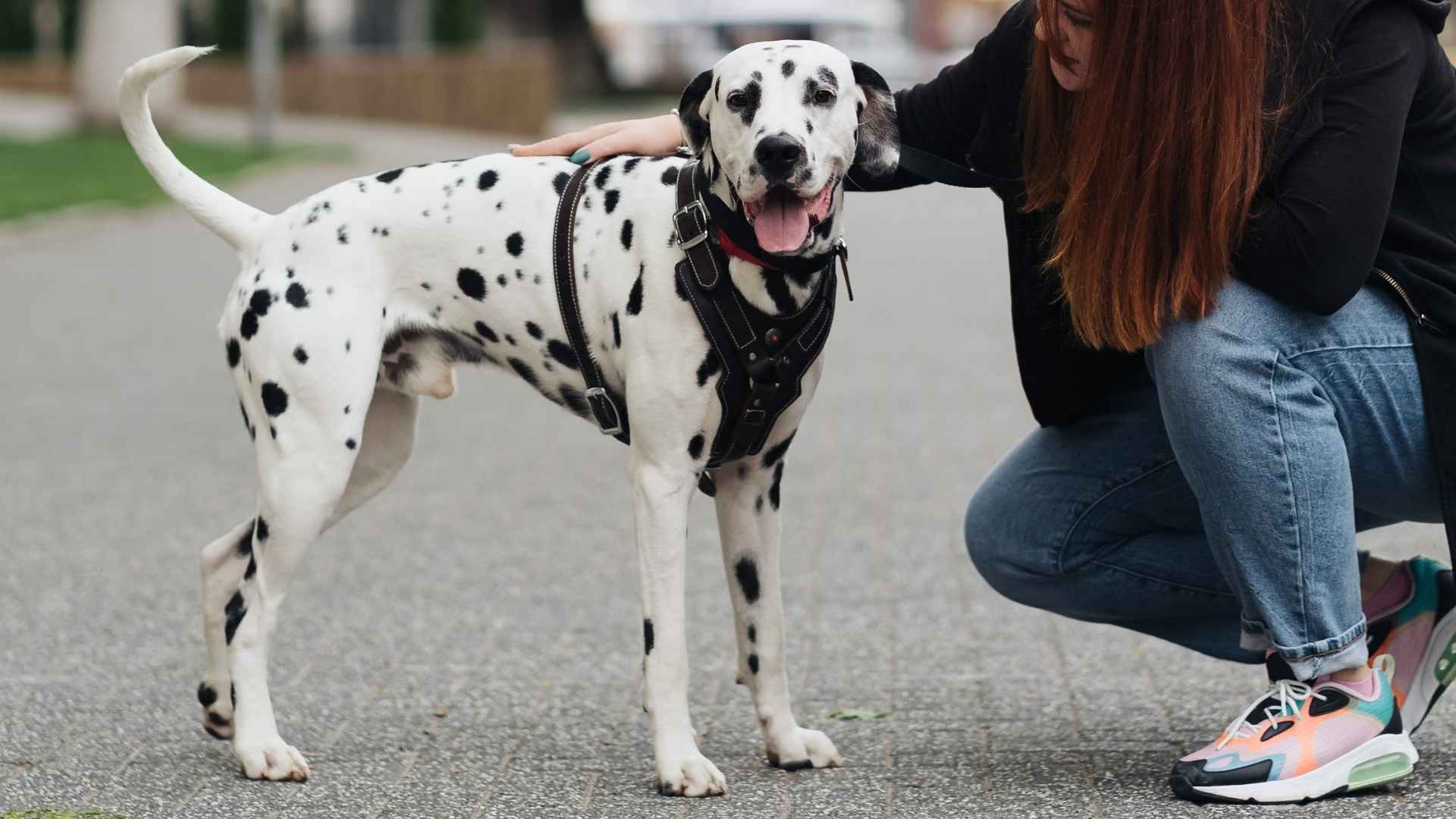We all pause mid-scroll when we see one—a dog with a coat that looks dipped in paint or dusted with freckles. Speckled dogs have that rare “can’t look away” quality.
It’s not something you find in every pup. Their coats carry personality. Charm. A bit of edge. They’re the kind of dogs people stop to pet, to ask about, and most definitely to post online.
But their appeal isn’t only skin-deep. These coats often hint at a breed’s unique role in history, genetics, and even work ethic. And while the patterns catch your eye, the dogs behind them steal your heart.
If you’ve ever found yourself zooming in on a photo of a freckled pup or dreaming of one curled up by your feet, this list is for you. You’ll meet dog breeds with speckled coats that are as raw and real as the land itself.
Dog Breeds With Speckled Coats
1. English Setter
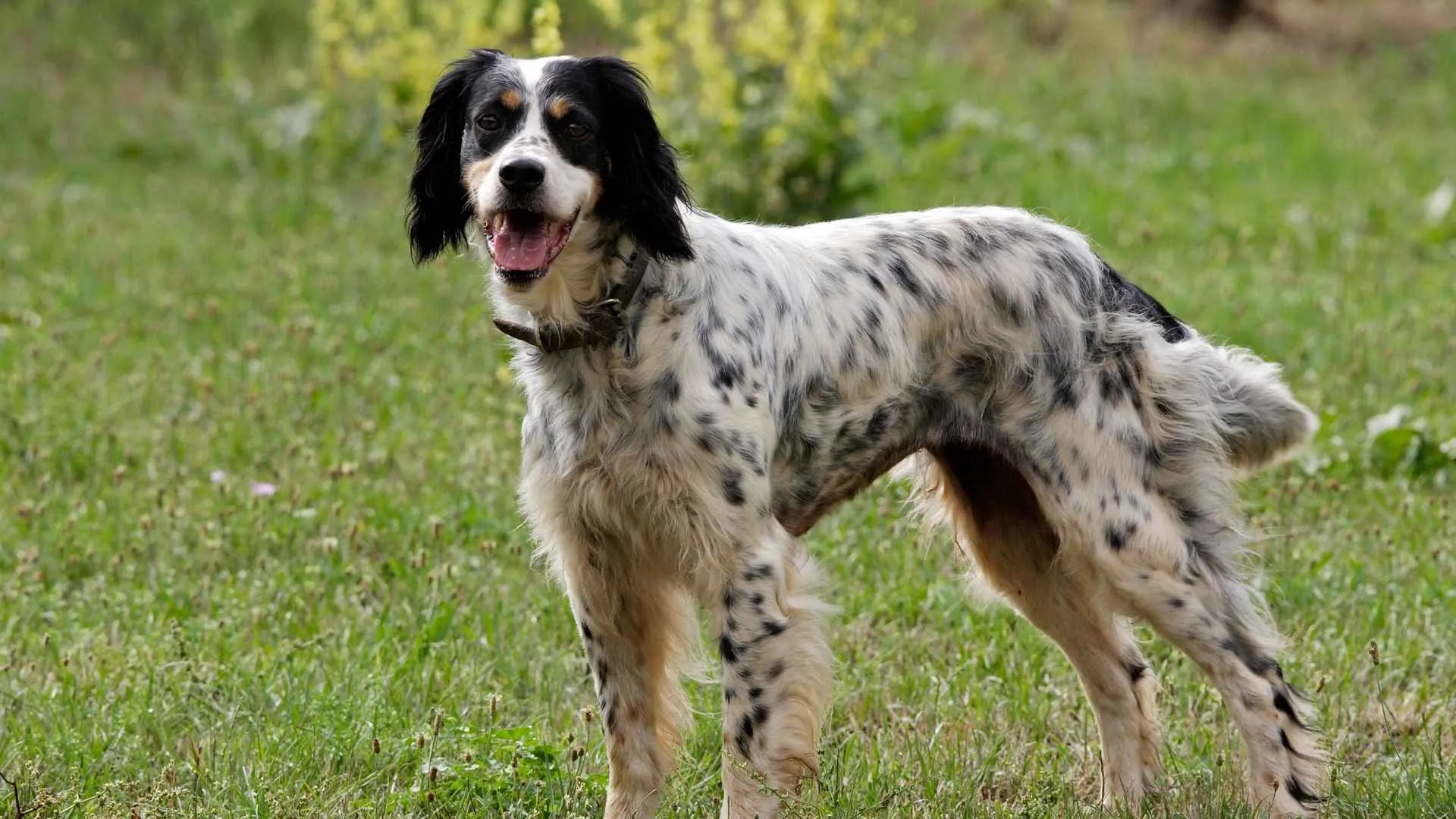
The English Setter’s coat is one of the most intricately patterned among spotted dog breeds. Flecks of color are scattered across a soft white coat, giving it a painterly, almost antique look. The pattern deepens with age, making each dog’s coat uniquely detailed.
Gentle but requires a structured routine
Though mellow indoors, English Setters need focused daily activity to stay balanced. Without it, their energy can turn into restlessness that frustrates unprepared homes. That’s why they’re often a better match for experienced owners than first-time dog owners.
Naturally social and people-focused
They’re not loners—they thrive on connection and don’t like being sidelined in family routines. Their gentle disposition makes them great with kids and respectful of boundaries when raised with care. They often shadow their humans from room to room without being demanding.
Coat care and field heritage
That flowing white coat may look delicate, but it was built for the outdoors. Originally bred as a field dog, the English Setter’s coat resists brush and debris more than it appears. Weekly grooming is a must to manage the feathering and keep those speckles looking crisp.
2. German Shorthaired Pointer
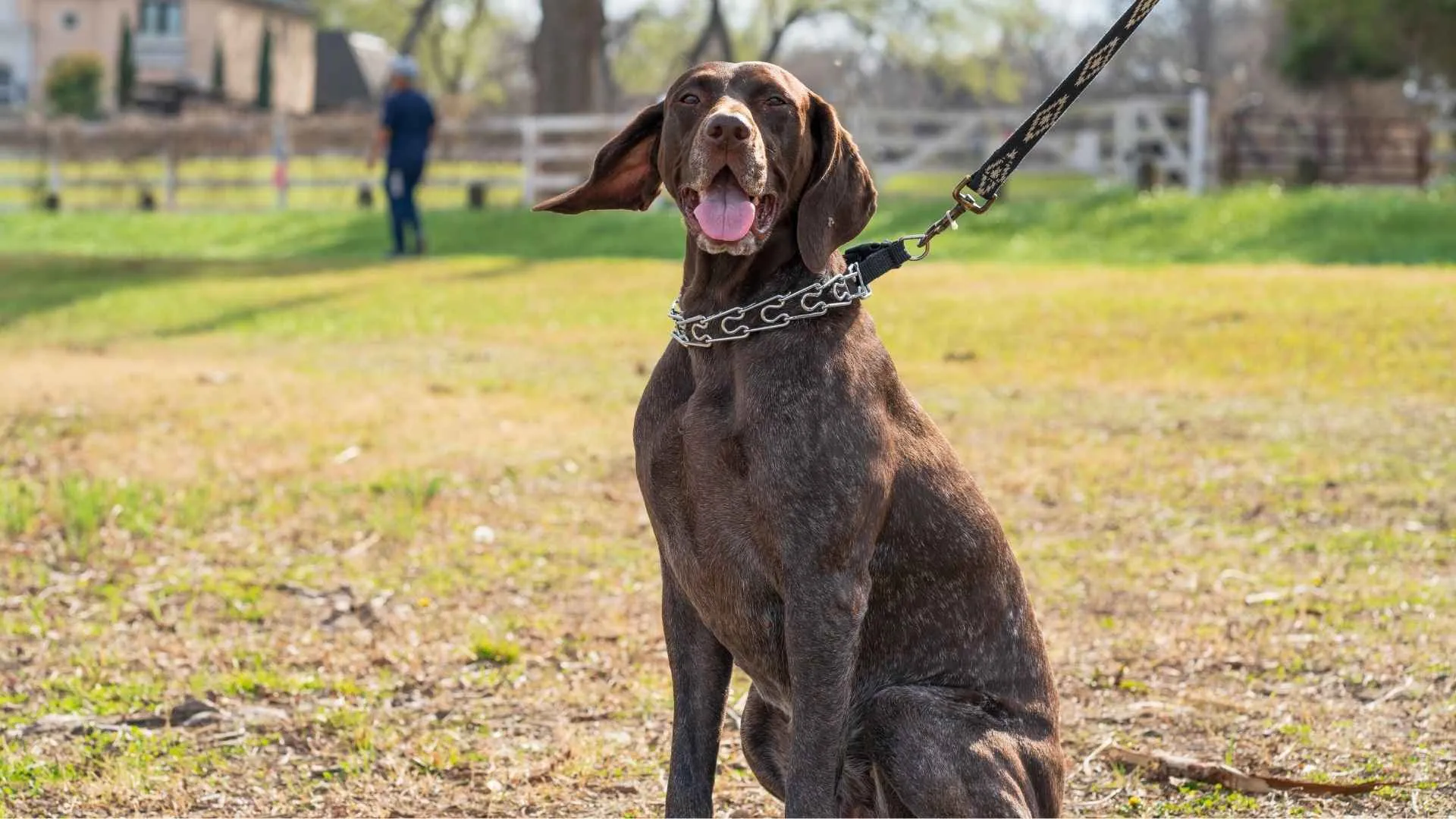
The coat of a German Shorthaired Pointer is a blend of liver and white spots that often appear in dense clusters or roaning. These markings are rooted in function, designed to help the dog stay camouflaged in dense brush. The sleek, water-resistant coat also dries fast after outdoor activity.
Driven by generations of work
Originally developed as a versatile hunting breed, this dog was bred to point, retrieve, and track on land and in water. Its instincts remain razor-sharp, making backyard games feel like field missions. The breed’s need for purpose can overwhelm homes that can’t meet its mental and physical drive.
Not a dog that blends into the background
German shorthaired pointers don’t idle—they observe, engage, and expect interaction throughout the day. While their affectionate nature makes them great family pets, they demand presence and structure to prevent behavioral issues. Homes with passive routines tend to clash with their intensity.
Tuned into their humans, but not for beginners
These are alert, expressive canine companions that feed off energy and attention. They’re a better fit for more experienced dog owners who understand structured training and consistent leadership. Without both, their independence quickly morphs into willful behavior.
3. Brittany Spaniel
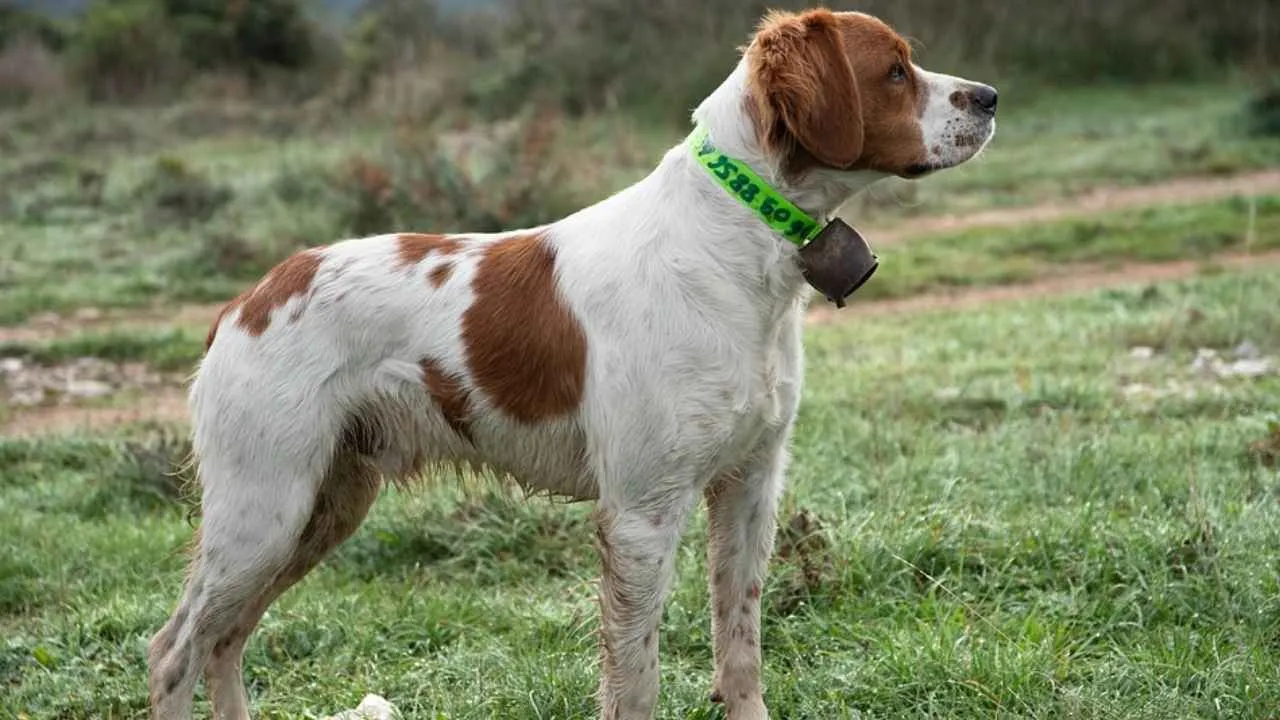
The Brittany Spaniel was developed with a laser focus on upland game, making it incredibly agile and responsive in the field. Its compact frame gives it an edge in tight brush, where other breeds might slow down. It doesn’t just run—it works in constant sync with its handler’s movements.
Freckled coat with athletic appeal
What makes this breed pop visually is the signature color combination—often orange and white or liver and white—blended with random ticking across the coat. The spotting tends to be more defined on the legs and face, especially as the dog matures. Each one has its own freckled pattern.
Sociable and good with other dogs
Brittanys are naturally tuned into group dynamics, whether that’s out hunting or at home. They usually mesh well with other dogs and can adapt quickly to multi-dog households. Their eager-to-please attitude keeps things balanced, especially with proper early socialization.
Sensitive but steady temperament
They’re highly sensitive to tone and thrive best with calm, consistent training. Their gentle nature can backfire if harsh discipline is used, making patience key. These dogs form quick emotional bonds and often adjust their behavior based on their human’s mood.
4. Wirehaired Pointing Griffon
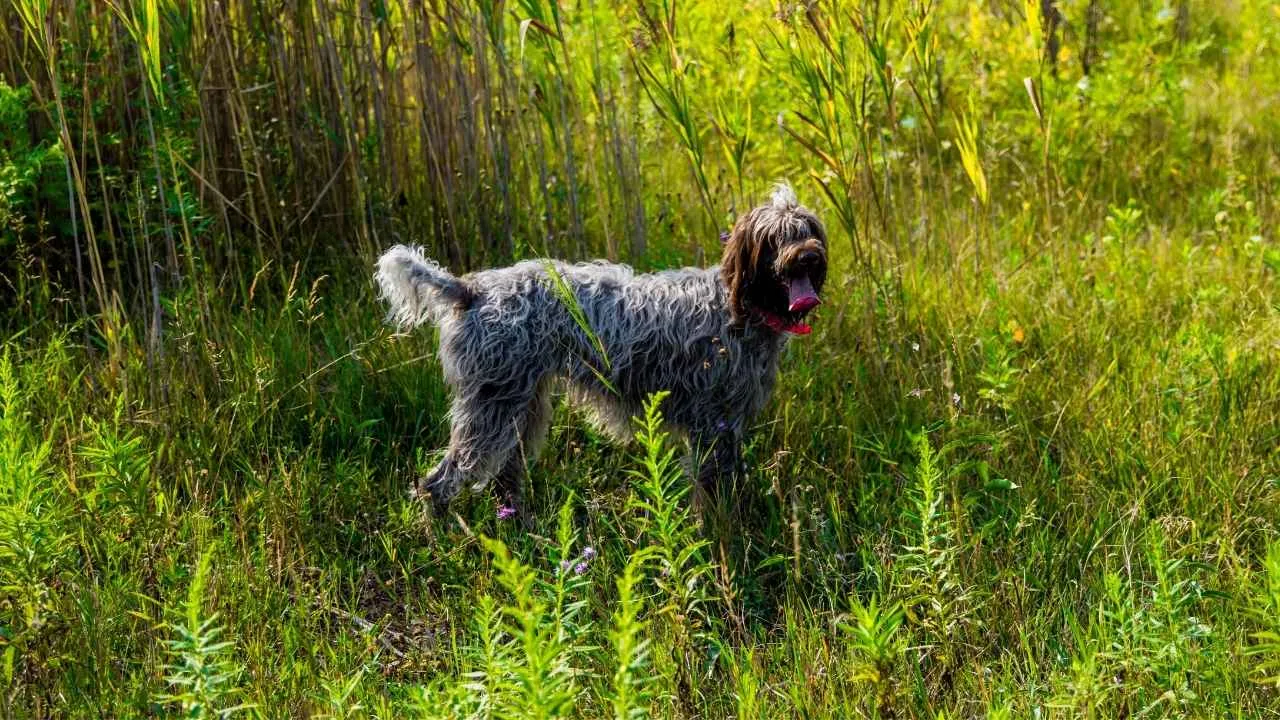
This breed’s coat is built to move through dense marshes and muddy fields. Its wiry texture helps repel water and thorns, staying practical in harsh terrains. Speckling often appears subtly through the dense fur, adding character without flash.
Driven, but surprisingly people-oriented
Though known as a top-tier hunting dog in Europe, this breed prefers to work closely with its humans. It craves direction and thrives on tasks that challenge its stamina and memory. That eagerness to stay connected makes it different from more aloof sporting breeds.
Subtle variety in coat colors
The coat leans rugged, but the shades are surprisingly nuanced—chestnut, roan, and steel gray commonly appear in layers. These muted tones are rarely solid; instead, they often come blended with spotted coats that evolve as the dog matures. It’s never quite the same between two dogs.
Sharp instincts with a scruffy edge
This dog isn’t just scent-driven—it visually tracks, too, which is uncommon for many field breeds. That mix of precision and persistence shows in both training and off-leash exploration. It pairs best with handlers who understand how to guide that intensity with calm consistency.
5. Australian Cattle Dog
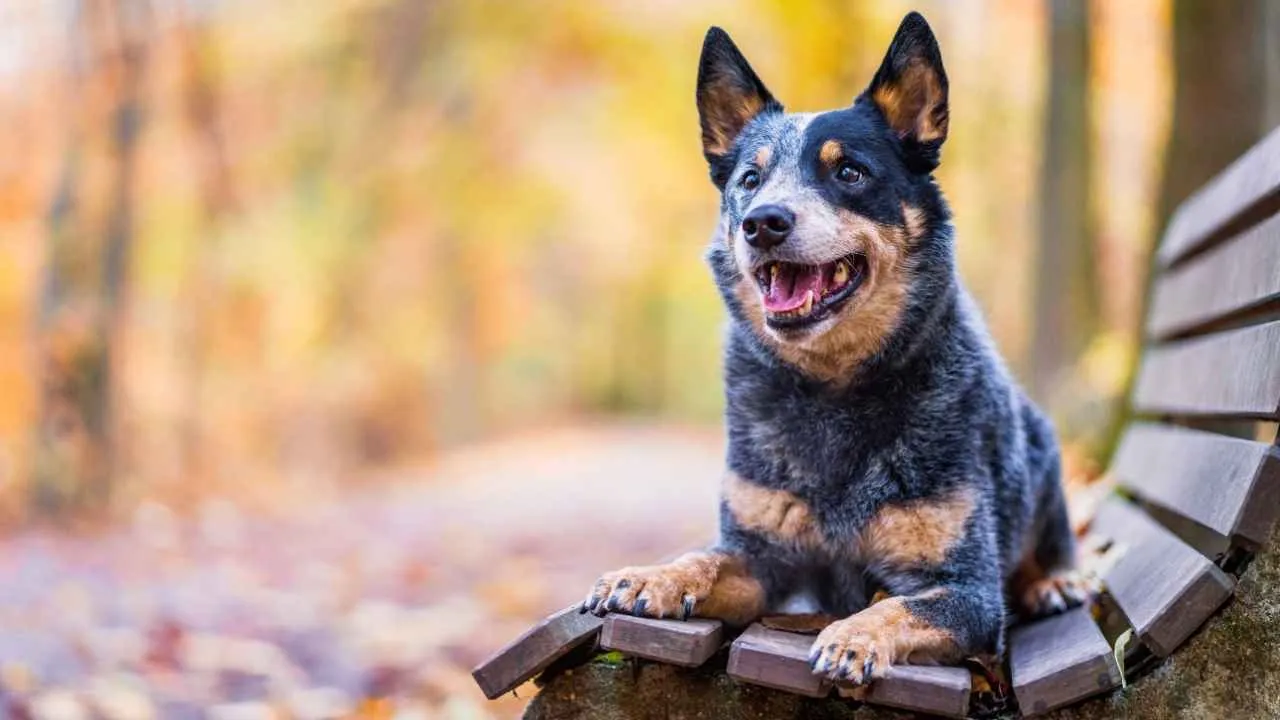
Australian Cattle Dogs are typically white at birth—something many don’t expect from such a bold-looking adult. As they grow, their coat develops the breed’s iconic blue or red speckles. This dramatic color shift is tied to their Dingo ancestry and controlled coat pigmentation.
Work ethic in every step
Bred for long-distance herding across rough terrain, this breed thrives on high physical and mental engagement, as per Purina. They anticipate commands without constant repetition and excel in problem-solving tasks. If under-stimulated, their energy often redirects into obsessive routines or chewing.
Not your average house companion
They’re not the type to lounge quietly all day like many dogs. Their independence and intense drive can overwhelm those looking for a low-key pet. Though loyal, they bond most deeply with one handler and may seem reserved around unfamiliar people.
Balanced instincts in the right home
With proper structure, they can be a great family dog—but only when everyone respects their space and needs. Their alertness makes them protective, but not aggressive by default. Socialization from a young age ensures they stay level-headed in busy or noisy environments.
6. Australian Shepherd
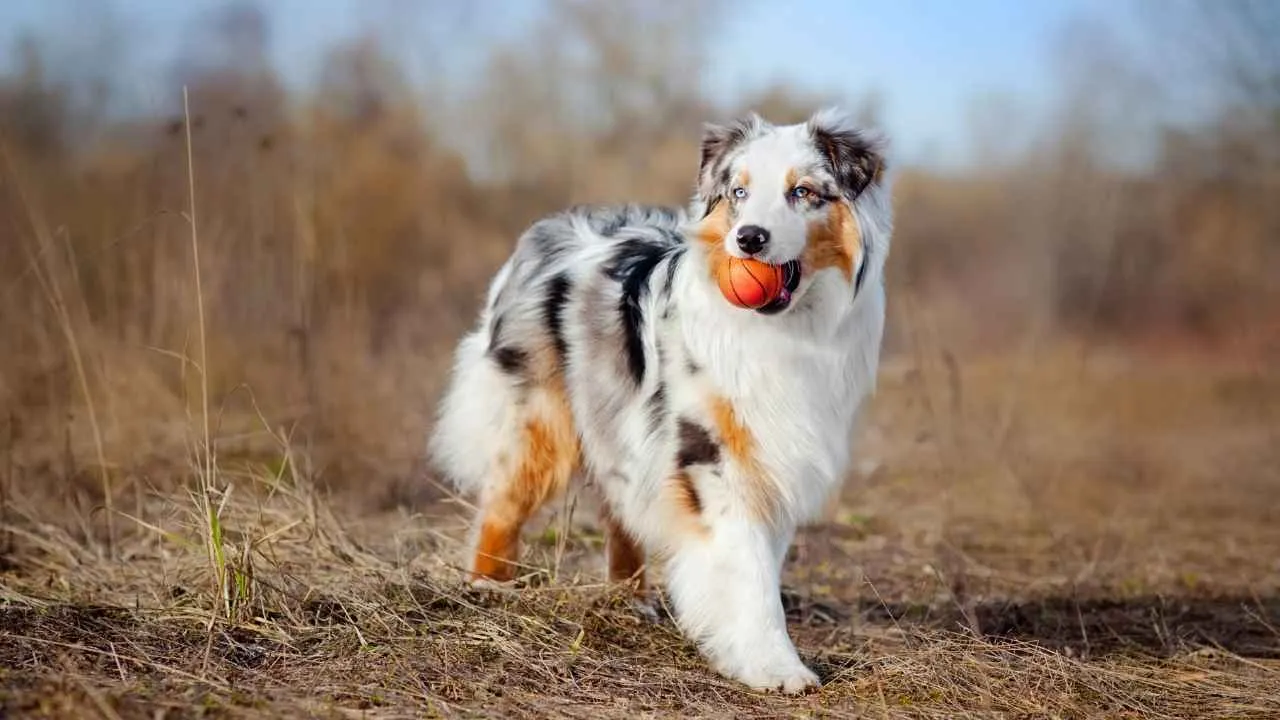
The Australian Shepherd’s coat displays one of the most visually complex merle patterns among speckled breeds. Flecks of blue, black, red, and gray sit against unpredictable base tones, often paired with mismatched eyes. No two coats look remotely alike—even within the same litter.
Work ethic is wired into their instincts
These dogs don’t simply enjoy activity—they expect it as part of daily life. Originally developed for herding livestock in rough terrain, they excel when given purpose. That’s why they pair best with active and dedicated people who can match their mental drive.
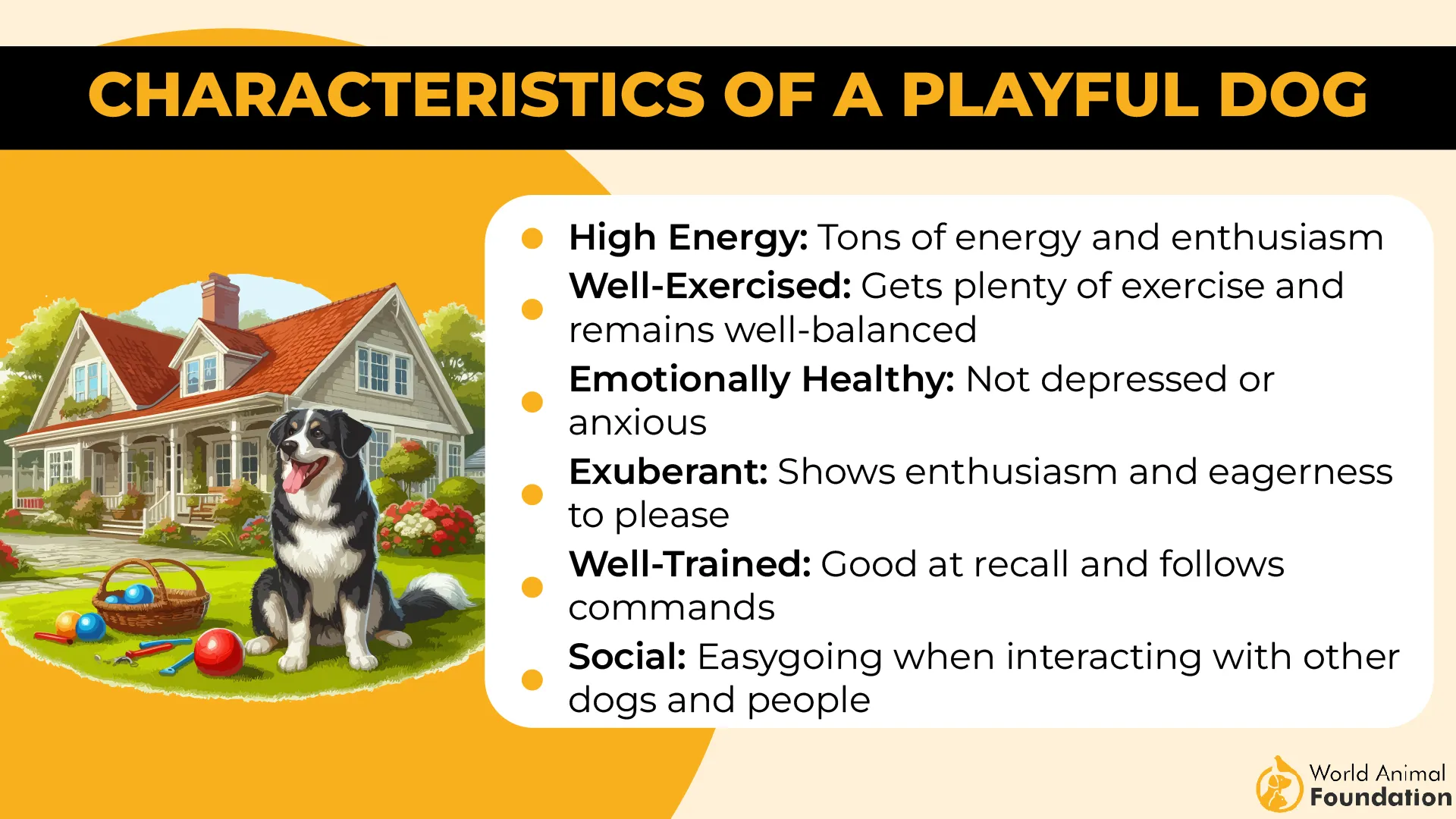
Emotionally sharp and observant
Aussies don’t miss much—they notice changes in tone, routine, or emotion within seconds. Their responsiveness makes them excellent at agility, search and rescue, and advanced training. It’s one reason they’re known for being incredibly loyal once they’ve bonded with their person.
High-maintenance in ways many overlook
This breed needs more than long walks to stay grounded—they require engagement that feels like a job. Without structure, they invent tasks, often herding kids, pets, or even furniture. Their speckled coat also needs regular brushing to prevent matting in the feathered areas.
7. Catahoula Leopard Dog

No two Catahoulas share the same speckled coat—their markings are unpredictable, layered, and often look marbled with striking contrasts. Some have ghostly glass-blue eyes that intensify their wild, untamed aesthetic. It’s a breed that visually stands apart, even among other speckled dogs.
Deep working instincts, not for passive homes
Originally developed to track and herd wild hogs through dense Louisiana swamplands, this dog’s drive is relentless. It needs a job, not just a yard—idle environments frustrate it quickly. According to PetMD, owners without structure or purpose often find the breed too intense to handle.
Emotionally complex and strongly bonded
Catahoulas form fierce attachments but aren’t blindly affectionate—they’re selective and observant, reading the energy of their surroundings. They don’t seek attention constantly, but they do expect trust-based relationships. Their loyalty feels earned rather than assumed.
Natural problem-solvers with sharp awareness
They think independently, often solving tasks without waiting for direction. This makes them excellent in working roles but challenging in typical pet settings. If left unstimulated, their intelligence turns into boundary-testing behavior that’s hard to redirect without clear leadership.
8. Dachshund
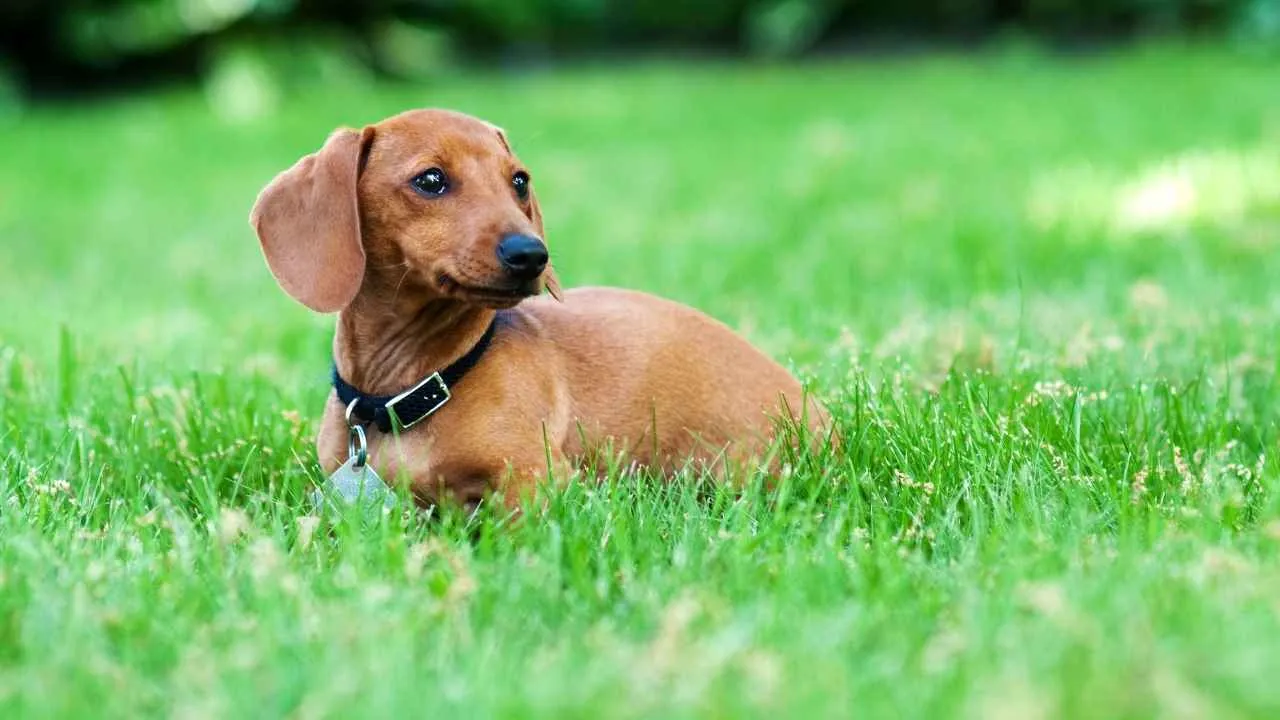
In Dachshunds, the speckled pattern is called “dapple,” and it’s directly tied to genetics unique to this breed. Dapple Dachshunds often have random light or dark patches across their base coat, sometimes paired with striking blue or partially blue eyes. This variety isn’t cosmetic—it’s breed-locked and carefully bred for.
Compact but bold in drive
Beneath that short frame is a determined tracking dog originally developed for underground hunting. Their sharp focus and persistence are traits that still show, especially during scent-driven games or walks. They’re not content with just lounging—they want a mission, even indoors.
Temperament can vary by coat type
Dachshunds come in smooth, wirehaired, and longhaired coats, and the coat type often influences personality. Wirehaired ones tend to be the most mischievous and energetic, while longhaired Doxies usually have a calmer, softer demeanor. These subtle differences often surprise new owners.
Special care for a delicate spine
That signature long back makes them prone to intervertebral disc disease (IVDD). Stairs and jumping can silently strain their spine, so many owners invest in ramps at home. Regular exercise helps strengthen muscles, but too much impact adds hidden risk.
9. Great Dane
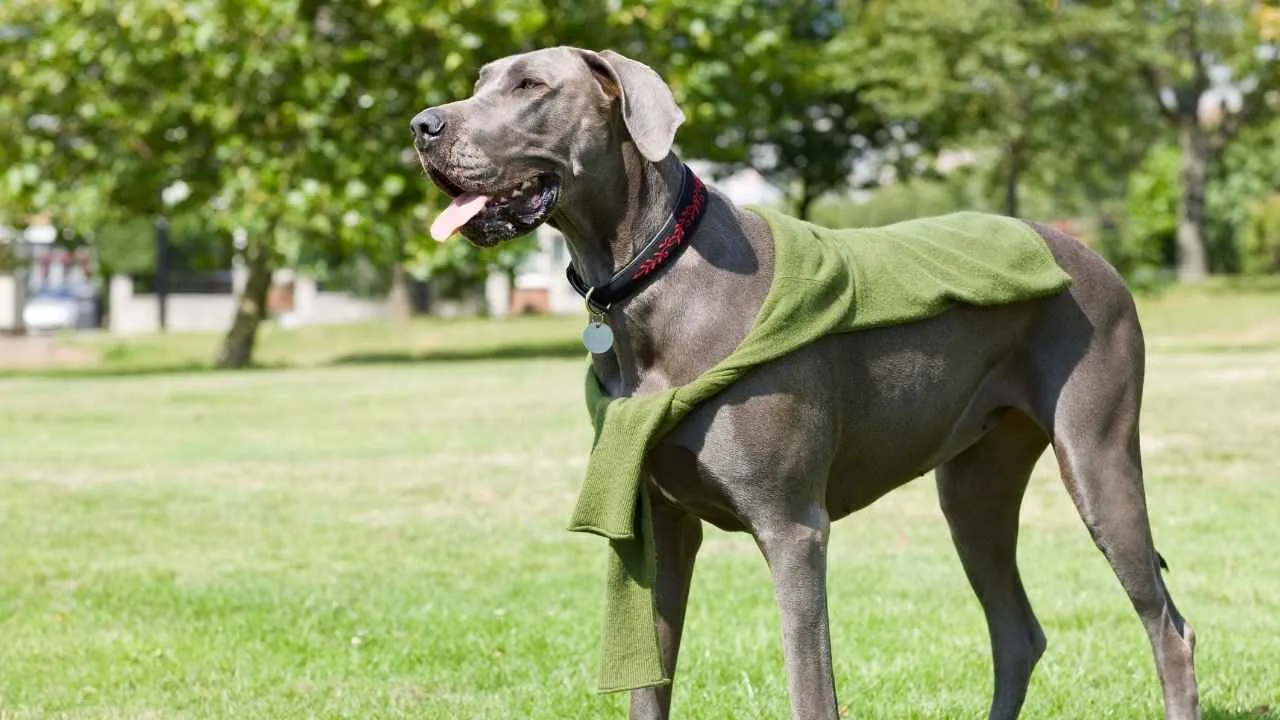
Though known for their size, certain Great Danes carry a merle or harlequin coat where speckling shows up in subtle, asymmetrical patterns. These flecks usually appear over a pale base, sometimes alongside large patches of black or gray. No two patterns are identical, even within the same litter.
Coat genetics that set them apart
What makes their speckling unusual is that it’s not just decorative—it’s tied to specific color genes that affect hearing and vision. Harlequin Danes, in particular, must be bred carefully to avoid doubling the merle gene. That level of genetic precision makes their markings both rare and carefully managed.
Chill demeanor with visual drama
The coat might catch attention, but temperament tells a different story. Speckled Danes are among the calmest large breeds, often preferring slow strolls and extended naps. They carry their striking appearance with zero ego, blending visual drama with laid-back ease.
Massive size, specific grooming needs
Their short coat may look low-maintenance, but those speckles need weekly attention to avoid dulling or buildup. Skin underneath can be sensitive, especially in lighter patches, requiring gentle products. With this size, even a basic bath feels like a full-scale operation.
10. Dalmatian
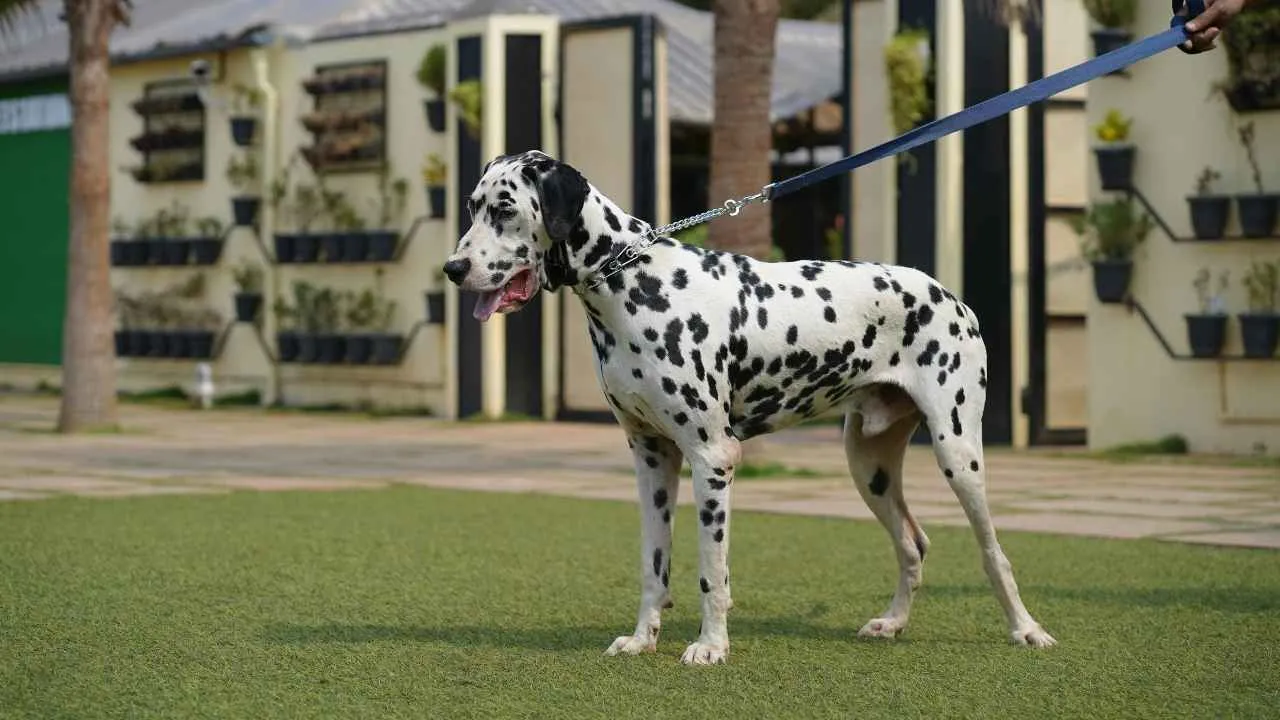
Dalmatians are born pure white, but their iconic spots begin forming within the first few weeks of life. By around a month old, their coat starts revealing its permanent pattern. No two Dalmatians share the same arrangement, and some even develop over time.
Endurance shaped by history
This breed was once a carriage dog, running for miles alongside horses. That job built its athleticism and made it highly responsive to direction on the move. Its natural stamina can be overwhelming for families not used to managing high energy.
Unique auditory trait
Dalmatians have one of the highest rates of congenital deafness among all dog breeds. This links directly to the genetics tied to their pigmentation. Responsible breeders now conduct BAER testing early to ensure puppies’ hearing is checked and documented.
Aloof with strangers, not shy
Though affectionate with their people, Dalmatians don’t hand out trust freely to everyone they meet. They observe new faces before warming up and have a strong memory for interactions. Training needs to start early, with a structure that respects their alert, sensitive nature.
Conclusion
From freckled ears to marbled legs, these dogs wear their coats like a canvas—natural, bold, and full of character. Every spotted pup we explored carries more than just visual flair; they carry a story of purpose, resilience, and charm.
Many of these breeds were born to be hunting companions, loyal and driven through thick woods and wide fields. Others have grown into household favorites thanks to their devotion and emotional intelligence, some even ranking among the smartest dog breeds.
Whether you’re drawn to a short-haired stunner or a floofy field dog, there’s a spotted breed for every type of home. But remember, behind every beautiful coat is a dog with energy, needs, and quirks—sometimes even a bit stubborn.
So if you’re thinking about adding one to your family, let their dog’s profile guide your match. Because these dogs aren’t just photogenic—they’re unforgettable.


